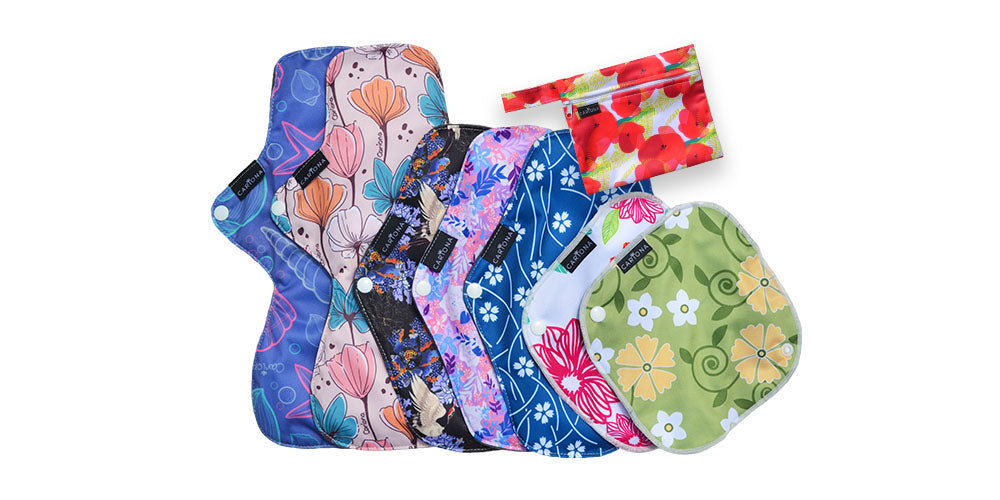Cloth Pads: A helpful way to ease your postpartum experience

Pregnancy is not easy but what comes after can also be tough for new mothers.
After giving birth, it might seem like you're finally done with the pain but you'll actually continuously experience discomfort and a variety of symptoms during postpartum, and one of these is vaginal bleeding or "lochia". Don't worry as this is totally normal and temporary and there are ways to safely manage through it.
What is postpartum bleeding or lochia?
According to WebMD, lochia is how your body gets rid of the extra blood and tissue in your uterus that helped your baby grow. Bleeding is the heaviest after giving birth and it will slow down as you recover.
How long does this last?
Whether you gave birth vaginally or normal (vaginally) lochia lasts for four to six weeks after delivery. However, every person is different, and postpartum bleeding may end sooner or later.

What should I NOT use during lochia?
Don't use tampons and menstrual cups, which can introduce bacteria into your still-recovering uterus and genital tract. You also have to note that your vagina is still recovering so you will be sore and swollen and inserting anything inside your vagina before it's fully healed is a big NO! It's best to consult your doctor or health care provider before resuming tampons, menstrual cups, or even sexual activities.
What should I use during lochia?
For the first six weeks, use only pads, even if you need pads as thick as diapers. We highly recommend using cloth pads as reusable pads are extra comfortable especially after giving birth.
| Benefit | Disposable Pad | Reusable Pad |
| Comfort | Tends to have a plastic texture making it sticky, bunchy, and uncomfortable |
Made of bamboo charcoal fabric which is extremely soft and comfortable. Bonus Tip: Put your clean pads inside your waterproof pouch and store them in the fridge before using them so you feel a bit of cool relief. |
| Absorption | Clots are not easily absorbed by the pad, so you feel uncomfortable. | Can absorb blood, clots, and urine perfectly. No need to sit on that wetness! |
| Chemicals | Contains chemicals and fragrances that can cause napkin dermatitis, skin rashes, and skin irritations. | Does not contain any chemicals, fragrances, or materials that can irritate your skin. |
| Adhesive | Has adhesives that can be painful especially if you have hair and stitches. | Comes with a button that you snap on your underwear to keep it in place. |
| Convenience | You can run out of stock and are forced to do grocery runs while being in pain. | Never run out of stock with reusable pads. |
| Washable | Thrown out after every use | Can be cleaned through hand washing or machine wash. It can also be air-dried or machine dried. |
| Eco-friendly | One pad can take up to 500 years to decompose. | Can be used for 3-5 years or even longer depending on how you take care of it. |
| Bonus | - | Can also be used once your monthly cycle resumes. |
Is this hygienic?

Which pads do you recommend for postpartum?

| Pad | XL Pads | Overnight | Limited Edition |
| Height | 14 inches long | 13 inches long | 10 inches long |
| Thickness | Five layers | Four layers with wider back coverage | Five layers |
| Flow (Light, Medium, Heavy) | Heavy Flow | Medium to Heavy Flow | Heavy Flow |
| Use when: | Use for the first 10 days of postpartum bleeding | Nighttime use if not bleeding as much | For people who want shorter pads but still experience heavy flow |
We highly recommend our XL pads especially for the first 10-14 days of postpartum bleeding. For people wanting shorter pads, we recommend our limited edition pads.




Leave a comment